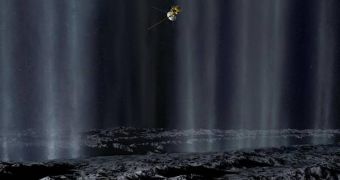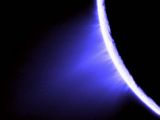The Cassini probe, which has been orbiting Saturn for more than four years now, has repeatedly provided series of images of one of its more interesting moons, Enceladus, which has been appointed as its new main target during the extended Equinox Mission. While looking at the geysers depicted in the photos and analyzing the plumes, a team of scientists concluded it's most likely that the process is driven by water, a primordial ingredient for life.
The data collected by the probe's Ultraviolet Imaging Spectrograph (UVIS) instrument suggest that the plumes may be a result of the activity of some water source contained under the surface of the moon. More specifically, the vapors that make it out of the main water reservoir are condensing into icy grains and spewed together with dust and gas particles at supersonic speeds (over 1,360 mph or 2,190 km/h) through the ice cracks towards space.
This is a feat that would be "hard to do without liquids," as the lead author of the research, Candice Hansen from NASA's Jet Propulsion Lab in California, explained for the Associated Press, quoted by MSNBC.
"There are only three places in the solar system we know or suspect to have liquid water near the surface," shared Joshua Colwell, a Cassini team expert at the University of Central Florida, cited by Eurekalert. "Earth, Jupiter's moon Europa and now Saturn's Enceladus. Water is a basic ingredient for life, and there are certainly implications there. If we find that the tidal heating that we believe causes these geysers is a common planetary systems phenomenon, then it gets really interesting."
The theory is far from being demonstrated beyond doubts, though, a fact that other fellow scientists point out. While admitting that the research is valuable, Andrew Ingersoll from the California Institute of Technology, for instance, indicates that such velocities for the spewed grains are also achievable with ice particles at lower temperatures. "We still have a lot to discover and learn about how this all works on Enceladus," admitted Colwell in turn. "But this is a good step in figuring it all out."

 14 DAY TRIAL //
14 DAY TRIAL // 
